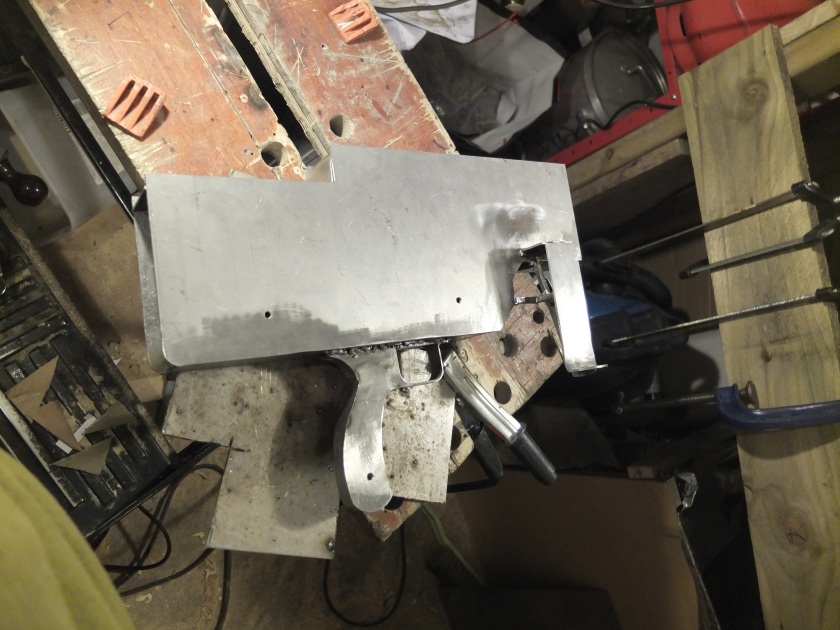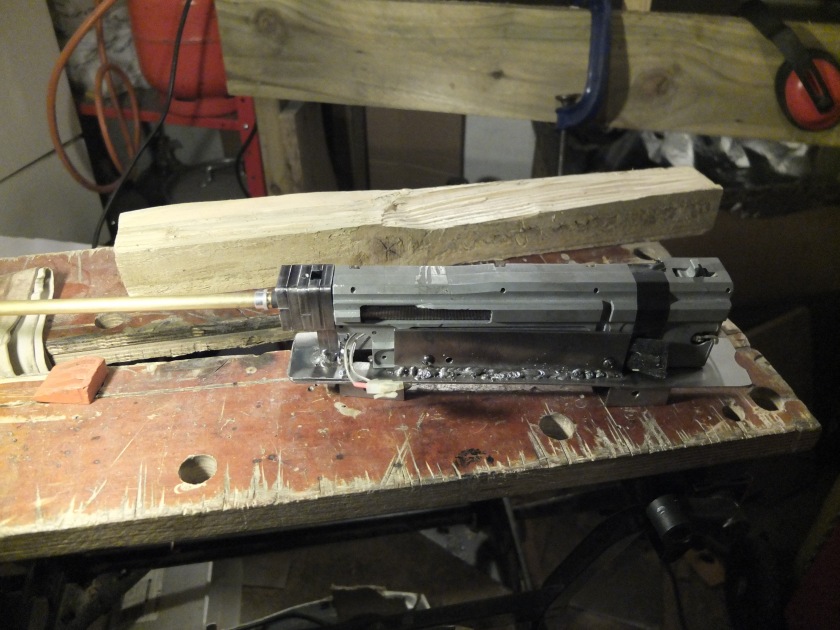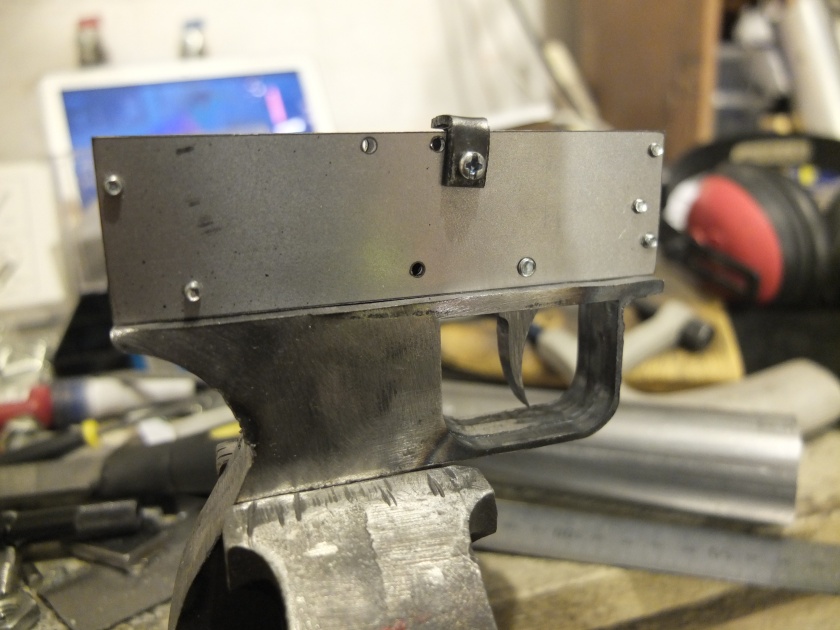The Fallschirmjägergewehr 42 was the product of German lessons learned during their attack on Crete in 1941.
This battle was the first battle in history where Paratroops were used en-masse, approximately 14,000 in all. The Germans won the battle, though with casualties so heavy that Hitler ordered that there would be no further large-scale paratroop operations. Oddly, the Allies saw the battle very differently: that paratroops had great potential and pushed forward the development of their own in order to gain the advantage this type of soldier would give them.

Fallschirmjägers landing on Crete, 1941.
bundesarchiv_bild_141-0864
The reason the battle was so hard on the Fallshirmjägers (German paratroops-literally translates as ‘parachute-hunter’) was that their main weapons; rifles, machine-guns and sub-machineguns were dropped in containers too far away from the soldiers. As a result much of the fighting had to be achieved with pistols and grenades, meaning the soldiers were at times hopelessly outgunned. As a result, the Luftwaffe wanted a gun that was light and compact enough to be dropped with the soldiers.

Dr. Bruno Sassen, showing the helmet and camouflaged variant of the over-smock.
The criteria were extremely specific and strict, so much so that only a handful of manufacturers offered up designs intended to seriously fulfil the requirements. The rifle had to:
- Be no longer than the standard K98k rifle
- Fire the 7.92 (often shortened to 8mm in American parlance) standard full power round
- Be magazine-fed
- Be select fire
- In semi-automatic fire from a closed bolt (for accuracy) and in full automatic fire from an open bolt (for cooling)
The last aspect was by far the most challenging. As this rifle needed to act in both the rifle and support weapon roles this was an arguable necessity but this did make the weapon much more complex.

FG42 Type 2 with ZF4 scope mounted. Note the rear sight in the folded down position. The foresight could also fold down for jumping to minimise protrusions that could catch on clothing.
The winning design by Rheinmetall was put into small-scale production and used. Some problems were found and revisions were made. Although there are between six and seven subtle variants of the FG42 altogether no distinction was ever officially made. Today they are generally separated into two types: one and two.

The two main types of FG42 next to one another. Type 1 top, type 2 underneath.
There are mixed reviews in terms of how these rifles performed. Some say that they were impossible to control (extremely light rifle + full automatic = not ideal), some that they were too sensitive to dirt and fouling. However in gun circles small faults do seem to get blown out of all proportion just by being repeated and the SMG Guns replica (check these guys out, they are truly top blokes) seems to shoot very nicely at least in semi-auto. Sadly they are not legally allowed to produce full automatic versions!
Although this was a full power cartridge, remember that the butt was sprung to help with recoil absorption and seems to have been effective.

FG42 with bipod deployed.
Sadly, very few of these astounding guns were produced. They were extremely expensive to make and the rest of the German military was leaving the standard 7.92 round behind in favour of the 7.92 Kurtz, an intermediate round. In order to standardise production of arms and ammunition the FG42 was shelved in favour of the much cheaper and simpler Stg44. Now buying an original FG42 is almost an impossibility, when they do rarely turn up for sale they reach truly astronomic prices.

Concealed Fallshirmjäger with a Type 1 FG42.
bundesarchiv_bild_101i-720-0344-09
Here at Vintage Airsoft we are building a prototype FG42 type two. If there is enough interest we will be doing a small production run of them. If you are interested, please do drop us a line in the comments or on our email: enquiries.vintageairsoft@gmail.com. The more people we hear from the more likely we are to make this a reality.

A working progress….
If you are interested in finding out more on this gun, I suggest you take a look at Forgotten Weapons. Ian has a nice summary of the gun and great photos of a US deactivated copy. He also has several ace videos with a video demonstration of the internals, a close look at a functioning original and an applied shooting competition using an SMG guns reproduction.





 Close-up of the pistol grip. This shows the back where you can see the screw used to attach the trigger mechanism inside the gun.
Close-up of the pistol grip. This shows the back where you can see the screw used to attach the trigger mechanism inside the gun.














